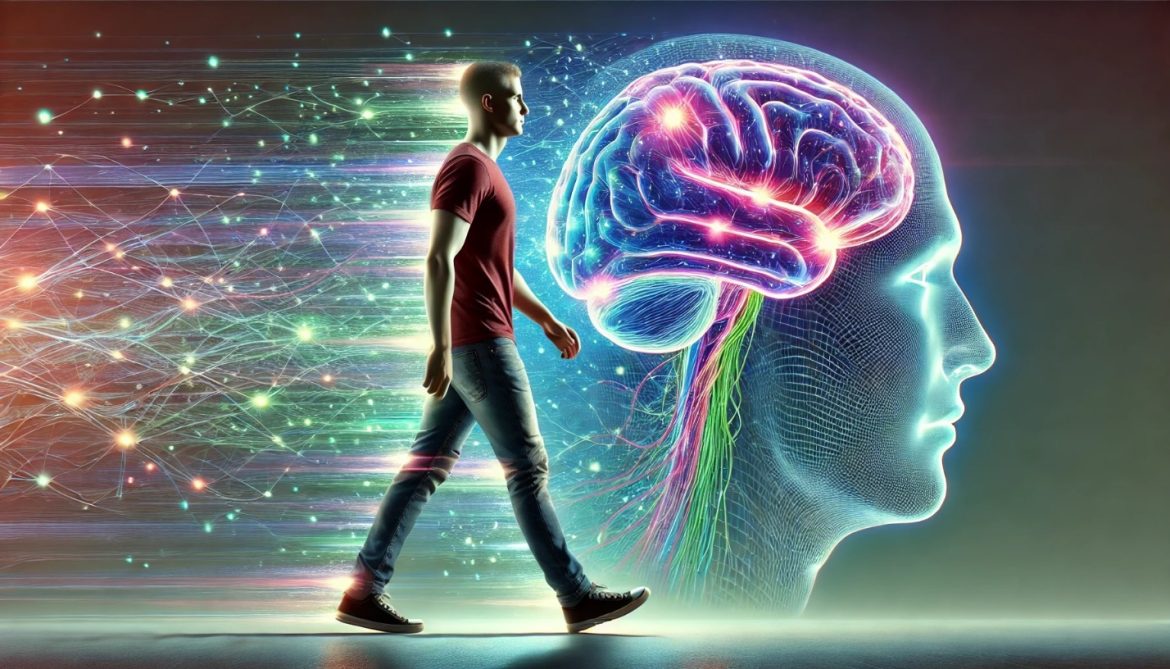Understanding how our bodies and brains work together offers fascinating insights into mental health, trauma treatment, and overall well-being. From forward movement’s calming effects to the incredible role of vision, this article explores groundbreaking discoveries and their applications in neuroscience and psychology.
The Role of Forward Movement in Reducing Anxiety
In 2018, a graduate student in my lab, Lindsey Saleh, published a study in the journal Nature that highlighted an intriguing connection between forward movement and emotional regulation. The study revealed that forward movement suppresses the fear response and activates what could be called the courage or confrontational response. This mechanism is deeply tied to the brain’s release of dopamine via a collateral connection to the nucleus accumbens.
Movement and Anxiety Reduction
This research shows that forward movement can reduce basal levels of anxiety. Activities such as running, biking, or swimming—forms of bodily movement that involve self-generated optic flow—can be particularly effective. Driving, however, doesn’t have the same effect because it lacks the lateralized eye movements required for this process.
The suppression of threat detection in the amygdala during forward movement enables us to pause, freeze, or retreat less when confronted with potential threats. This natural mechanism is present across all animals and plays a crucial role in reducing stress.
EMDR: A Revolutionary Trauma Treatment
In the late 1980s, Francine Shapiro discovered a powerful connection between movement and trauma processing. During a walk in Palo Alto, she noticed that troubling feelings about a past event diminished as she moved. This realization led her to develop a clinical technique called Eye Movement Desensitization and Reprocessing (EMDR).
How EMDR Works
In EMDR therapy, patients move their eyes from side to side while recounting traumatic events. This process effectively uncouples the trauma from feelings of discomfort. Over time, EMDR has shown high success rates in treating trauma, particularly single-event traumas or repeated traumas with a similar signature. It remains one of the few board-certified behavioral practices for trauma treatment.
The Eyes: A Window to Internal Regulation
Our eyes do more than just see; they are integral to regulating our internal states. The retina is a direct extension of the brain, making it the only brain tissue outside the skull. This unique connection underscores the role of vision in managing arousal, calmness, and even circadian rhythms.
Vision and Circadian Biology
Viewing sunlight in the morning triggers the release of cortisol, waking up the brain and nervous system. This process also sets a timer for melatonin secretion, ensuring proper sleep-wake cycles. The eyes, in this sense, are critical not only for seeing but also for maintaining our internal biological rhythms.
Vision as a Tool for Mental Health
One area of active research in my lab focuses on how vision impacts internal states and how this knowledge might be applied to mental health treatments. By leveraging the eyes’ unique connection to the brain, we can potentially unlock new approaches to mental health care and trauma recovery.
Unlocking the Power of Movement and Vision
The interconnectedness of movement, vision, and emotional regulation reveals fascinating possibilities for improving mental health. Whether it’s reducing anxiety through forward movement or treating trauma with EMDR, these discoveries emphasize the profound influence of our physical actions and sensory inputs on mental well-being.
As we continue to explore these connections, the potential applications for trauma recovery, stress reduction, and mental health treatments are endless. By harnessing the power of movement and vision, we can empower individuals to lead healthier and more balanced lives.
This article highlights the groundbreaking research and applications that bridge neuroscience, psychology, and everyday practices to enhance mental well-being.
Summarization:
Jesus said, ‘The eye is the light of your body. Whatever you allow into your eyes—the things you look at—if they are dark, then your whole mind and body will be dark, and it will be a great darkness. But if the things you look at are light, good, encouraging, uplifting, and hopeful, then your whole mind and body will be full of light, goodness, encouragement, and strength.’ (Matthew 6:22)




